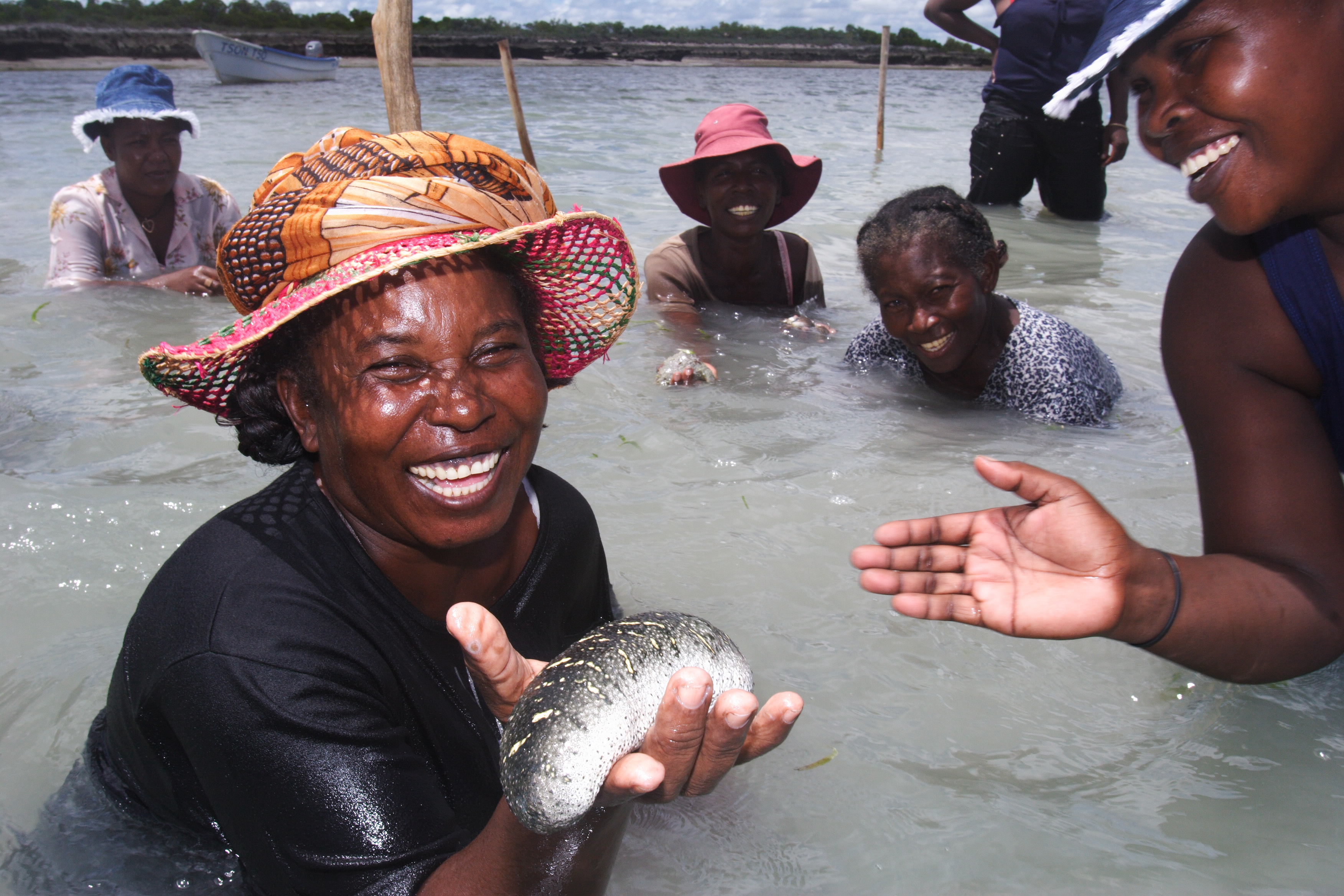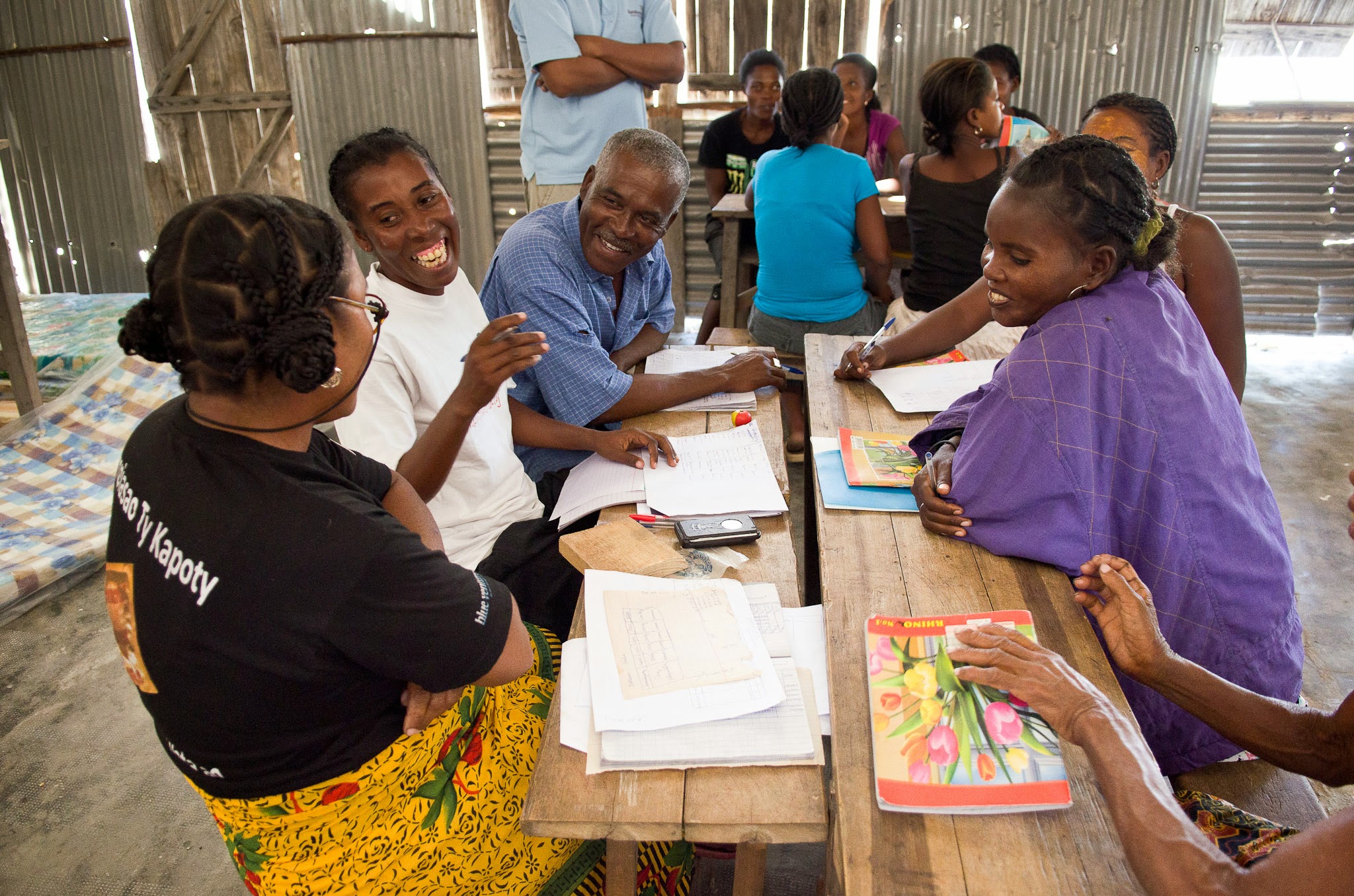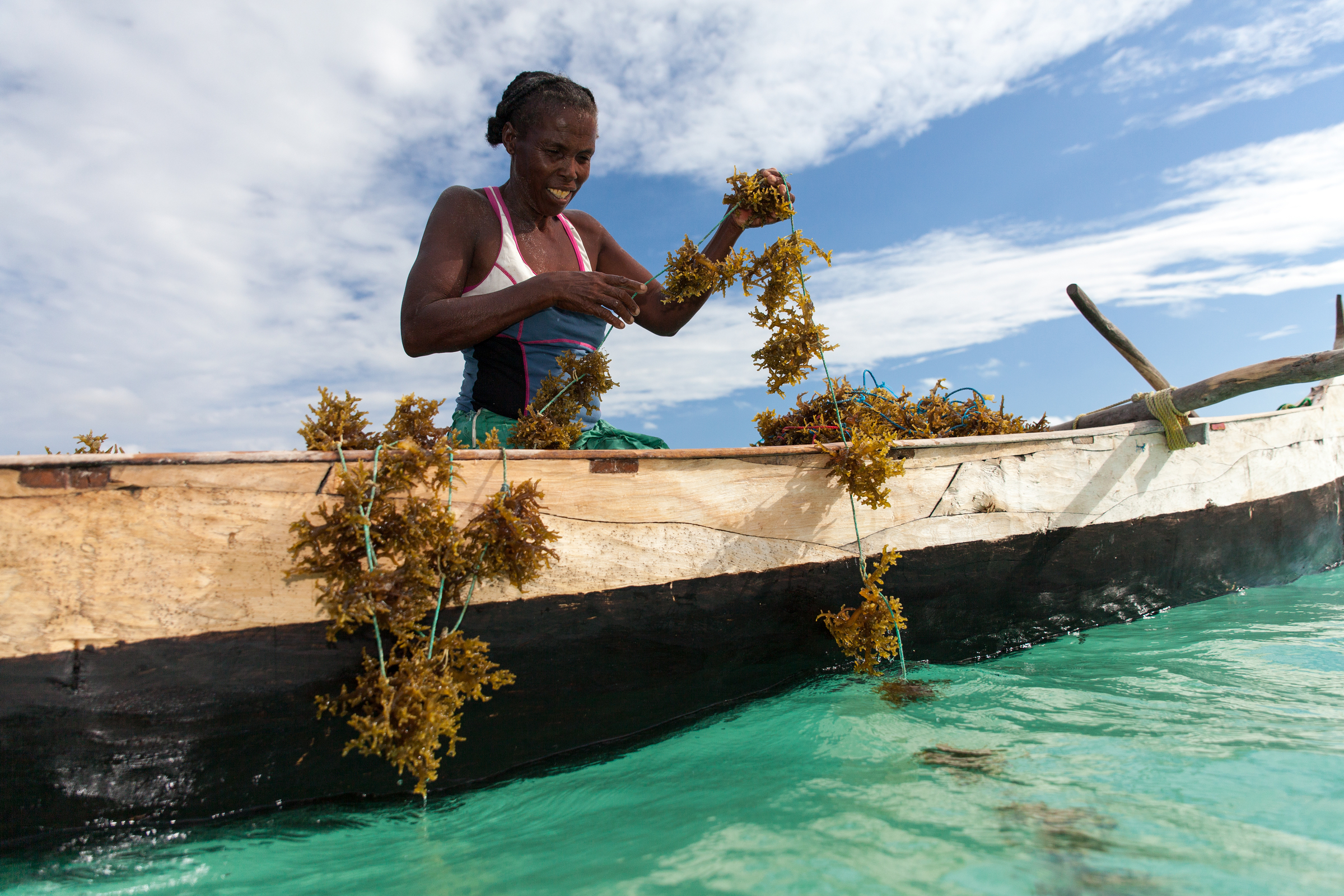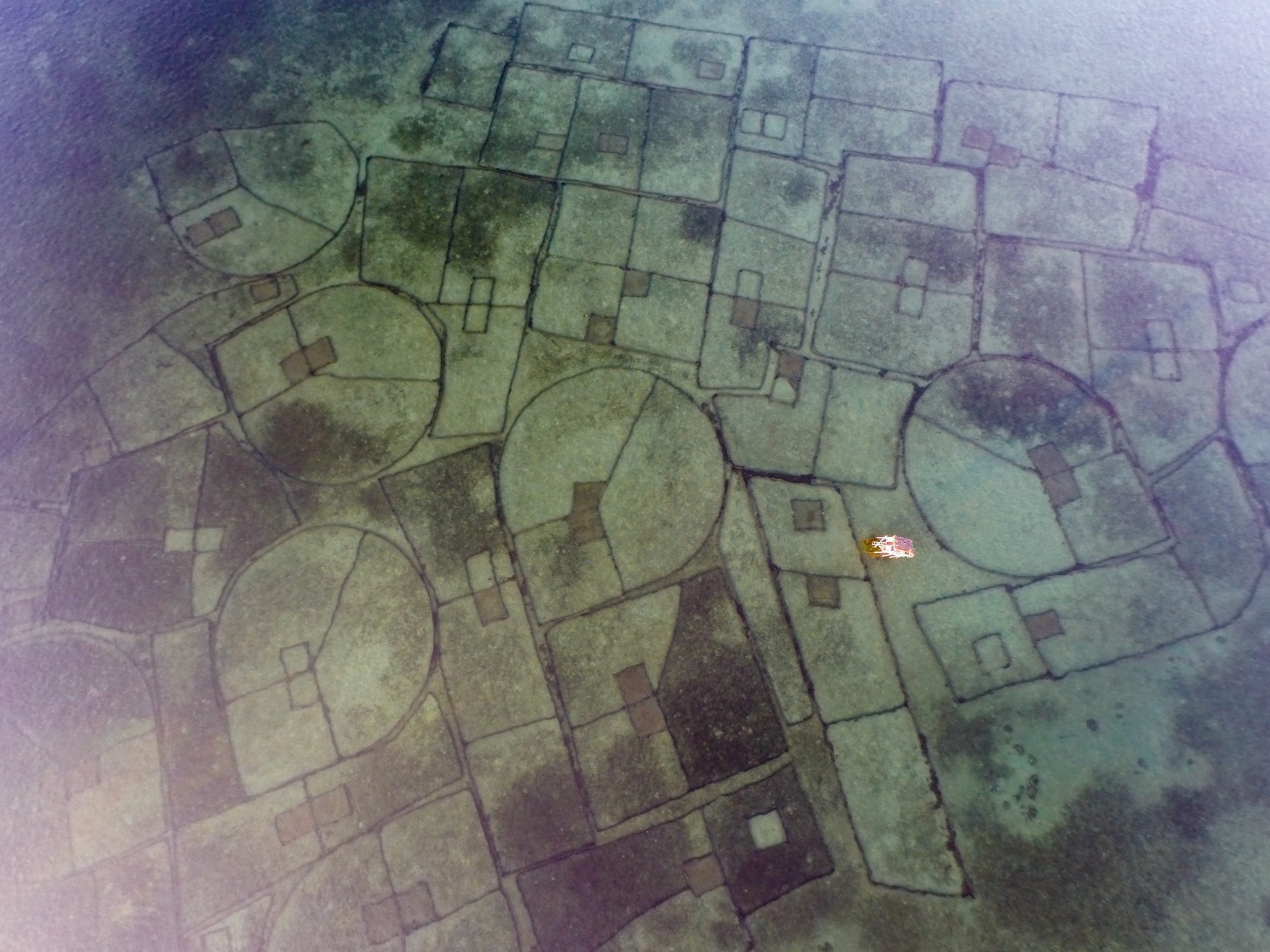Community-based aquaculture
Aquaculture training session
Sea cucumber farm from the air
The purpose of this building block is to provide Blue Ventures’ partner community members with new sources of income, allowing improved access to food and education, while alleviating pressure on fisheries and marine biodiversity.
Working with the University of Toliara’s marine science institute (IHSM), local seafood exporter Copefrito and aquaculture company Indian Ocean Trepang (IOT), Blue Ventures is connecting isolated coastal communities in the Velondriake LMMA with lucrative international markets for seaweed and sea cucumbers, enabling families to develop their own aquaculture businesses. Blue Ventures’ aquaculture specialists have trained over 700 people to become farmers of sea cucumbers (Holothuria scabra) and red "cottonii" seaweed (Kappaphycus alvarezii). In partnership with CITE, a Malagasy NGO supporting local socio-economic and entrepreneurial development, they also help to nurture small business development with training programmes that build the technical, financial, managerial and organisational skills needed by fishermen and women to manage their own aquaculture businesses.
Partnerships with a marine science institute, local seafood exporter and aquaculture companies are fundamental to this initiative. The sea cucumbers are initially reared in hatcheries in the regional capital, and the juveniles are then transferred to community-run pens and grown out until they reach commercial size, when they can be harvested for international export to Asian markets. The technical inputs and market demand accessed through these private sector partners is crucial to the functioning of this initiative.
Blue Ventures has found this community-based aquaculture programme to be a highly effective in providing communities with new sources of income, allowing improved access to food and education, while alleviating pressure on fisheries and marine biodiversity. Over half of the farmers supported are women, who are able to use their new income to help pay for children’s school fees and supplement their family’s diet. Challenges relating to high levels of juvenile sea cucumber mortality following transfer to lagoonal enclosures are being addressed through culling of predatory crabs and technical improvements to pen design, which have been successful in increasing survivorship from 40% to 77%. Loss of sea cucumbers through theft is a major challenge as these are highly valuable with numerous traders and wild stocks are severely overexploited. Farmers are tackling this problem by constructing watchtowers to monitor pens, and implementing a rotation system of night guarding.





